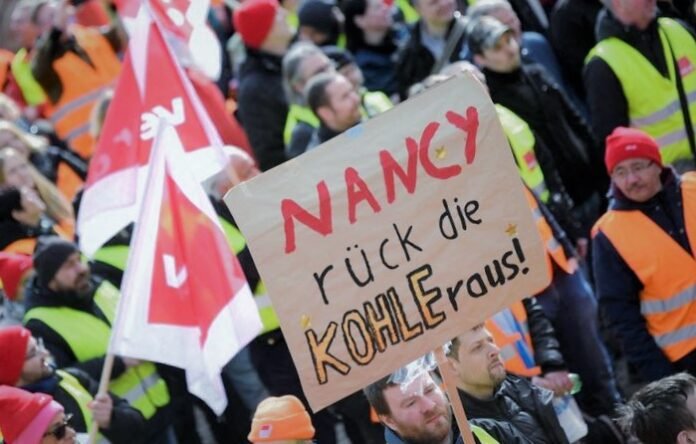A Bewildering and Impulsive Exploration: Germany’s Pay Deal and the ECB’s Inflation Battle
The Enigmatic Pay Increase Proposal
In a perplexing turn of events, Germany has proposed a permanent 5.5% pay increase for 2.5 million public sector workers next year. Additionally, a series of one-off payments over the next 12 months aims to tackle the soaring cost of living. Analysts furrow their brows, wondering how this move may entangle the European Central Bank (ECB) in its ongoing battle against inflation. This precedent-setting proposal could endanger the ECB’s forecast of wage growth peaking this year, the foundation of its eurozone inflation expectations returning to the central bank’s 2% target by 2025.
Gazing into the Wage Growth Crystal Ball
Peering into the uncertain future, the ECB envisions average wage growth across the 20 euro-using countries to be 5.3% this year, dipping to 4.4% next year, and dwindling to 3.6% in 2025. Nevertheless, the past whispers of these forecasts being too benign haunted some policymakers when presented to them last month. According to Holger Schmieding, Chief Economist at Berenberg, the German deal arms ECB policy hawks with “another argument to raise key rates at least twice more, and at least not to rule out a new 50 basis point move on May 4.”
Oscillating Public Sector Wages: A Dovish Perspective
On the other hand, economists observed that the German public sector pay agreement emerged after a period of dwindling real wages, where prices outgrew salaries. Christian Schulz, an economist at Citi, claimed, “Doves may argue that the deal comes after a period of wage restraint and is reasonably front-loaded.”
Marcel Fratzscher, a former ECB economist who has since founded the DIW think tank, calculated that the deal will result in public sector workers enduring a 6% drop in purchasing power by the end of next year, assuming 6% inflation in 2023 and 3% in 2024. This suggests that it could take at least another five years for public sector wages to recover this loss of purchasing power and for employees to regain their 2021 standard of living.











